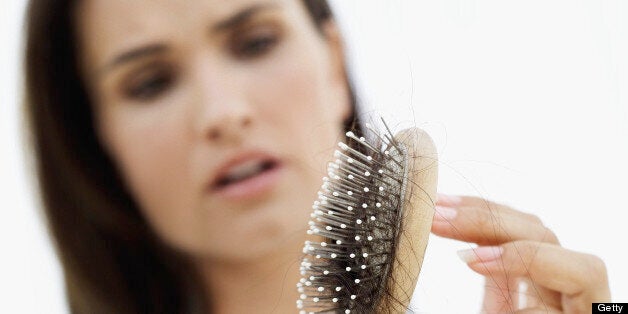
As the sun finally decided to visit the UK this past week, who could blame us for dashing out the door picnic blanket and swimwear in hand to bask in the long-awaited arrival of British summertime. As families hit gardens and parks to frolic in paddling pools or simply soak up the sun's rays, those worried about hair loss were faced with some difficult decisions: wear a hat and sweat it out, or risk sun cream that could exacerbate thinning hair problems by clumping hairs together? Not to mention the problems presented by hosepipe-induced wet hair messing up careful styling.
At this time of year I see many patients who are trying to distinguish old wives' tales about hair loss in the summer months from anecdotal truths and plain facts. So, what should those wary of thinning hair be aware of? The most common worry that I hear of is from people concerned about 'seasonal' hair loss. Whilst there has been no proven cause and effect here, there certainly seems to be a common trend whereby shedding is triggered in the summer months, resulting in increased hair fall in the Autumn, based on the fact that once hairs are prematurely sent into their resting phase, it takes around three months for them to shed, so triggered hair loss is never instant.
So, what could cause this shedding? There is a theory that like other mammals such as the dog, we simply shed to create a thinner, 'summer' coat, enabling our bodies to cool down more efficiently. However, this is hard to prove, as is the theory that the stress to our bodies from the sun and warm weather causes hair loss from telogen effluvium. Telogen effluvium is short term hair loss, whereby hair should regrow without treatment in the months following the shedding, so even though we can't say for sure what causes seasonal hair loss, if you find an increased number of hairs in the shower when the leaves start turning brown, there's probably no cause for alarm (especially as we shed 100 hairs a day normally).
I also often get questions about how often people worried about hair loss should wash their hair, as many people mistakenly believe that washing hair too often may result in an increase in hair fall. This is simply not the case, and giving your scalp a firm wash will help to shift the build-up of dandruff, oil and sweat that accumulates thanks to the heat. You don't need to worry about keeping hair pristine constantly, though, as naturally occurring oils and shed skin cells on the scalp are unlikely to clog hair follicles, and therefore preventing new hair from growing through.
Of course, there are always exceptions to the rule, and if you suffer from a scalp condition, care should be taken to treat it and prevent it from leading to hair loss. Specially selected creams and lotions should be able to help here, though if you notice hair falling out in the irritated areas, you should visit a hair loss specialist to check there's nothing else going on (such as scarring alopecia) which can lead to permanent hair loss that is medically untreatable.
So, there's no need to worry about getting a little sweaty in the sunshine, and whilst sweat can cause hair to look scraggly and mean that scalps are more likely to be on show, using sun cream for the scalp and covering up with a hat will ensure that the sun does no damage. Of course, if your scalp seems to be showing through more than in previous years, it could be that genetic balding is kicking in, which does require medically proven hair loss treatment to prevent it from slowly worsening. A good way to tell whether this is happening is to compare the hair density on the top of your scalp with the back and sides, as pattern hair loss only affects the top. If there's a difference, a diagnosis from a hair loss specialist is required to establish the best hair loss treatment plan for you.
Have fun in the sun and remember, a sweaty head won't cause hair loss, but be prepared for some seasonal shedding come autumn, and if it hair doesn't return to its previous thickness, it might be something a little more permanent!